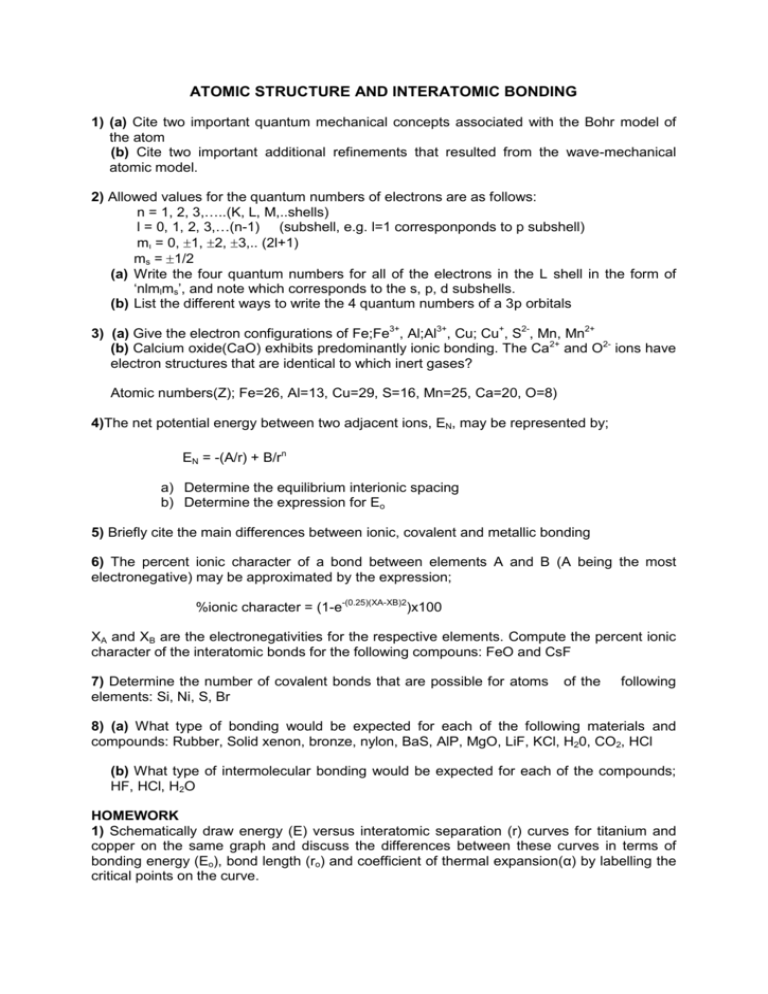atomic structure and interatomic bonding - MSE 235
advertisement

ATOMIC STRUCTURE AND INTERATOMIC BONDING 1) (a) Cite two important quantum mechanical concepts associated with the Bohr model of the atom (b) Cite two important additional refinements that resulted from the wave-mechanical atomic model. 2) Allowed values for the quantum numbers of electrons are as follows: n = 1, 2, 3,…..(K, L, M,..shells) l = 0, 1, 2, 3,…(n-1) (subshell, e.g. l=1 corresponponds to p subshell) mı = 0, 1, 2, 3,.. (2l+1) ms = 1/2 (a) Write the four quantum numbers for all of the electrons in the L shell in the form of ‘nlmlms’, and note which corresponds to the s, p, d subshells. (b) List the different ways to write the 4 quantum numbers of a 3p orbitals 3) (a) Give the electron configurations of Fe;Fe3+, Al;Al3+, Cu; Cu+, S2-, Mn, Mn2+ (b) Calcium oxide(CaO) exhibits predominantly ionic bonding. The Ca2+ and O2- ions have electron structures that are identical to which inert gases? Atomic numbers(Z); Fe=26, Al=13, Cu=29, S=16, Mn=25, Ca=20, O=8) 4)The net potential energy between two adjacent ions, EN, may be represented by; EN = -(A/r) + B/rn a) Determine the equilibrium interionic spacing b) Determine the expression for Eo 5) Briefly cite the main differences between ionic, covalent and metallic bonding 6) The percent ionic character of a bond between elements A and B (A being the most electronegative) may be approximated by the expression; %ionic character = (1-e-(0.25)(XA-XB)2)x100 XA and XB are the electronegativities for the respective elements. Compute the percent ionic character of the interatomic bonds for the following compouns: FeO and CsF 7) Determine the number of covalent bonds that are possible for atoms elements: Si, Ni, S, Br of the following 8) (a) What type of bonding would be expected for each of the following materials and compounds: Rubber, Solid xenon, bronze, nylon, BaS, AlP, MgO, LiF, KCl, H20, CO2, HCl (b) What type of intermolecular bonding would be expected for each of the compounds; HF, HCl, H2O HOMEWORK 1) Schematically draw energy (E) versus interatomic separation (r) curves for titanium and copper on the same graph and discuss the differences between these curves in terms of bonding energy (Eo), bond length (ro) and coefficient of thermal expansion(α) by labelling the critical points on the curve.











